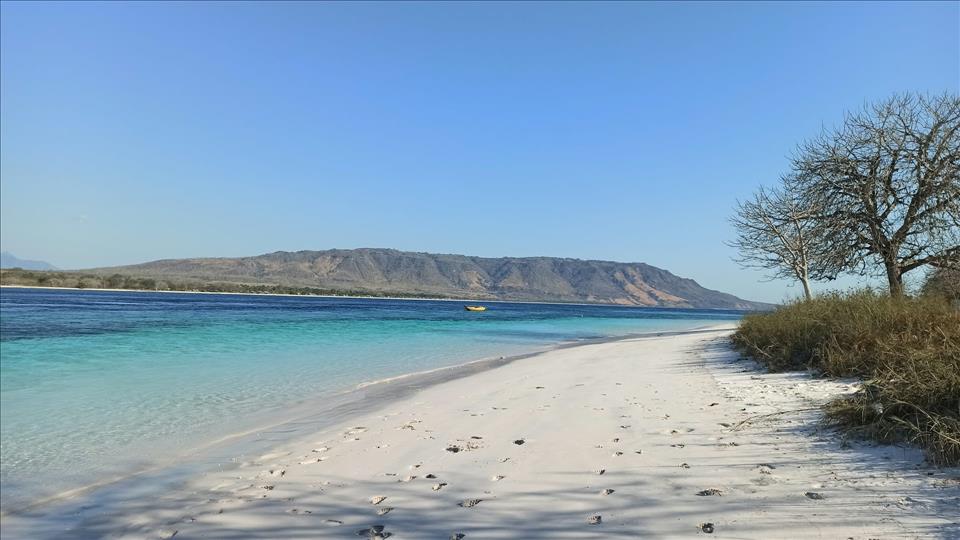
Finding 'Kape': How Language Documentation Helps Us Preserve An Endangered Language
As of 2025, more than 7000 languages are spoken across the world. However, only about half of them are properly documented, leaving the rest at risk of disappearing .
Globalisation has propelled languages such as English and Chinese into the mainstream, and they now dominate global communication .
Parents today prefer their children learn widely-spoken languages. Meanwhile, indigenous languages, such as Copainalá Zoque in Mexico and Northern Ndebele in Zimbabwe, are not even consistently taught in schools .
Indigenous people generally did not use writing for centuries and, therefore, their languages do not have ancient written records . This has contributed to their gradual disappearance.
To prevent the loss of endangered languages, field linguists – or language documentarists – work to ensure that new generations have access to their cultural heritage. Their efforts reveal the vocabulary and structure of these languages and the stories and traditions embedded within them.
My research team and I have spent over 13 years documenting endangered Papuan languages in Southeast and East Indonesia , particularly in the Alor-Pantar Archipelago , near Timor , and the Maluku Islands . One of our significant and very recent discoveries is Kape, a previously undocumented and neglected language spoken by small coastal communities in Central-Northern Alor.
Not only is the discovery important for mapping the linguistic context of the island, but it also highlights the urgency of preserving endangered languages by employing Language Documentation methods.
The discovery of KapeIn August 2024, while working with our Abui consultants, Shiyue Wu , my Research Assistant at Xi'an Jiaotong-Liverpool University , discovered a previously-ignored, presumably undocumented Papuan language from Alor, 'Kape'.
At the time, she was gathering information about the names and locations of ritual altars known as 'maasang' in the Abui area, with assistance from our main consultant and several native speakers. In Central Alor, every village has a 'maasang'.
During conversations about the variants in altar names across Alor languages and Abui dialects, some speakers mentioned the name of the 'maasang' ('mata') in Kape-a language previously unrecorded and overlooked in linguistic documentation.
'Kape' translates to 'rope', symbolising how the language connects its speakers across the island, from the mountains to the sea. Geographically and linguistically, it is associated with Kabola in the east and Abui and Kamang in Central Alor.
At this stage, it is unclear whether Kape is a distinct language or a dialect of Kamang, as the two are mutually intelligible. Much of Kape's basic lexicon (the collection of words in one language), indeed, shares cognates (related words among languages) with Kamang.
However, Kape is spoken as the primary (native) language by the whole Kape ethnic group of Alor, and the speakers consider themselves an independent linguistic and ethnic community. This could serve as an element for regarding Kape as a language.
Kape also shows connections with Suboo , Tiyei , and Adang , other Papuan languages from Alor Island. The speakers, known as 'Kafel' in Abui, are multilingual, fluent, to some extent, in Kape, Kamang, Bahasa Indonesia, Alor Malay, and, sometimes, Abui.
So far, no historical records have been found for Kape, though archival research may reveal more about its origins. Based on its typology and lexical characteristics, Kape appears as ancient as other languages spoken in Alor. Like many Papuan languages, it is critically endangered and requires urgent documentation to preserve its legacy.
Abui people performing the ritual 'lego lego' dance in Takpàla village, Alor Island. Author provided. Courtesy of the research team Documenting languages: An ongoing challenge
Language Documentation aims to reconstruct the unwritten history of indigenous peoples and to guarantee the future of their cultures and languages. This is accomplished by preserving endangered, scarcely documented or entirely undocumented languages in disadvantaged and remote areas.
External sources, like diaries by missionaries and documentation produced by colonisers , can help reconstruct some historical events. However, they are insufficient for providing reliable linguistic data since the authors were not linguists.
Our Language Documentation Team at work in Alor Island. Author provided. Courtesy of the research team
My research team and I document endangered languages, starting with their lexicon and grammar. Eventually, we also explore the ancient traditions and ancestral wisdom of the native speakers we work with.
We have contributed to the documentation of several Papuan languages from Alor Island, especially Abui , Kula , and Sawila . These languages are spoken among small, sometimes dispersed communities of indigenous peoples belonging to different but related ethnic clusters.
They communicate with each other mostly in Bahasa Indonesia and Alor Malay . This is because their local languages are almost never taught in schools and are rarely used outside their groups.
Over time, in addition to documenting their lexicons and grammars , we worked to reconstruct their place-names and landscape names , oral traditions , foundation myths , ancestral legends and the names of plants and trees they use.
We also explored their traditional medical practices and local ethnobotany , along with their musical culture and number systems .
Linguistic map of the Alor-Pantar Archipelago (Southeast Indonesia) Author provided. Courtesy of the research team
Safeguarding Kape is not just linguistically relevant. Its preservation and documentation are not just about attesting its existence – they also contribute to revitalising the language, keeping it alive, and allowing the local community to rediscover its history, knowledge, and traditions to pass down to the next generations.
This journey has just begun, but my team and I – with the indispensable collaboration from our local consultants and native speakers – are prepared to go all the way towards its completion.

Legal Disclaimer:
MENAFN provides the
information “as is” without warranty of any kind. We do not accept
any responsibility or liability for the accuracy, content, images,
videos, licenses, completeness, legality, or reliability of the information
contained in this article. If you have any complaints or copyright
issues related to this article, kindly contact the provider above.


















Comments
No comment